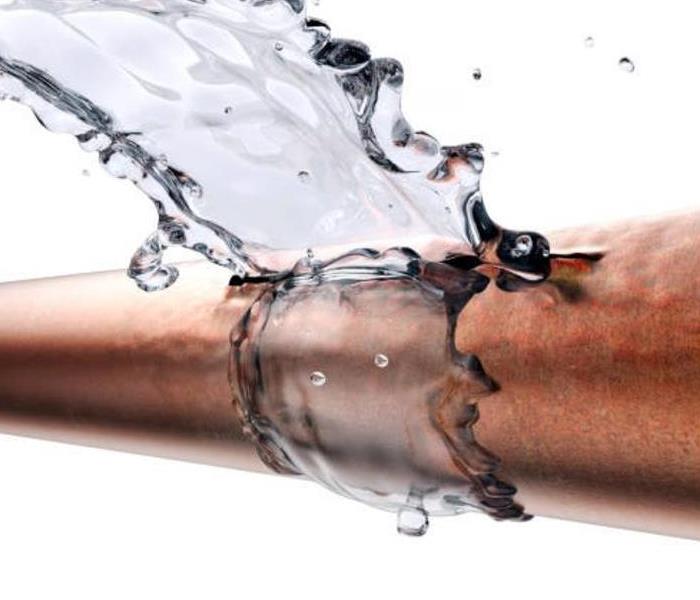Frozen Pipes: Tips to avoid frozen pipes
1/20/2020 (Permalink)
 Frozen pipes are a very real issue. There are so many ways to avoid this issue. Take proper precautions to avoid having to deal with this issue.
Frozen pipes are a very real issue. There are so many ways to avoid this issue. Take proper precautions to avoid having to deal with this issue.
When the temperatures start to drop, our pipes start to fall for a risk of freezing then bursting. When a pipe bursts, the results can be catastrophic. Pipes are one of the most common causes of property damage during cold weather. The resulting water damage easily adds up to $5,000 or more.
Most risk areas are those in unheated spaces. Typically, these are basements, attics and garages-however, even pipes that run through cabinets can freeze. There are a few things that can be done to avoid any issues and additional cost.
*Pipe insulation is extremely inexpensive and easy to use. Use the insulation liberally and be sure to use it on any vulnerable pipes.
*Keep your garage doors closed, especially if you have any water supply lines that run through the garage. Just that little bit of barrier can make a large difference.
*Open cabinet doors in kitchen and bathrooms to allow for some warmer air to circulate if you have pluming behind those cabinets.
*Let the cold-water drip from a faucet linked to exposed pipes. Just a little bit of running water makes a large difference and helps prevent pipes from freezing.
*Keep the thermostat the same temperature at all times during the colder temperatures.
*Do not set your temperature any lower than 55° F, even if you plan on being away. Keeping the temperature stable will help prevent frozen pipes.
*Add insulation. This can be easily added to basements, crawl spaces and/or attics. What you are wanting to do is prevent drafts, seal cracks and eliminate any openings around windows, doors or anywhere air would come in. This will save on your energy bill as well!
*If you have a room that has pipes and seems to be colder, add a space heater to this room where pipes may be at risk. Please follow all safety regulations associated with the space heater and use caution.
If a pipe has broken-start by turning off the water at the main shutoff valve. This is usually at the water meter or where the main line enters the house. Contact SERVPRO to begin the clean up process and contact a licensed plumber






 24/7 Emergency Service
24/7 Emergency Service